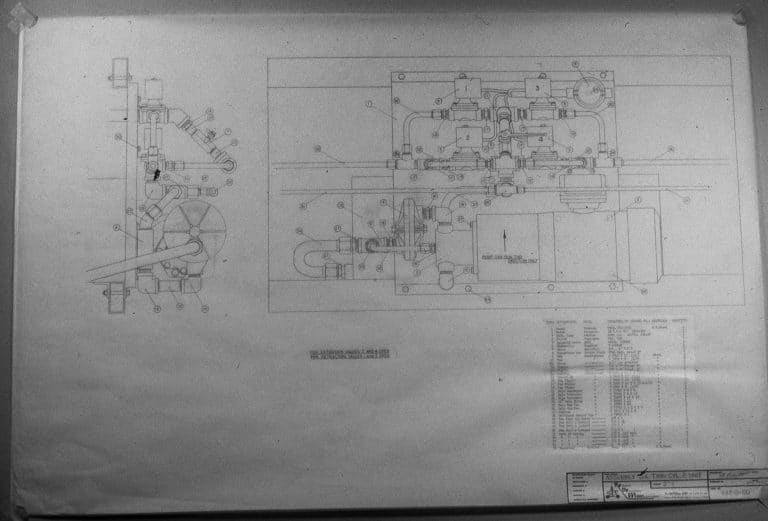Pictured above is a drawing my father created in or before 1969.
I don’t believe that it depicts anything particularly remarkable, but this isn’t my field.
What is remarkable is that this image exists at all.
I’m in the process of digitizing old slides and family photos, and ran across a box of slides (Kodak Ektachrome, for the photographically inclined) that my father took in 1969. He carefully mounted drawings he’d created on his drafting board, and taken photographs of them.
Taking pictures of documents to preserve them. Something we now do frequently with our digital cameras and mobile devices. Heck, I even photograph restaurant credit card receipts without taking them with me to the same effect. While I have actual scanners for documents, if they fail, or whatever it is I’m attempting to preserve doesn’t fit, out comes my camera or smart phone.
Was he … backing up? I like to think so, since if so he was doing it decades before his son started beating that particular drum. 
In reality I suspect the reasoning might have been less mundane. The photographs might instead have been proof that the drawings existed on or before a certain date. Perhaps a kind of safety net should there ever be a patent-related or other type of question. (I don’t believe this image shows anything that generated a patent, but my dad did have several.)
Either way, I also like to think of this as a little evidence that in some small way he was, indeed, ahead of his time.
(Ideally this would have been yesterday’s Father’s Day post, but I quite literally stumbled upon these slides today, the day after.)


It seems that the change of human generations is connected with some loss of information, the previous people have obtained, gathered or created. E.g., it seems that in the field of AI nobody knows, nobody uses one simple empiric formula (commonly known in last century’s fifties) for emotions: E=N(I-i), it is: experienced emotions E are proportional to the needs N multiplied by the difference of information, where I is the information, individual has, but the i – the information, necessary for satisfying the need. This formula correspond to real life: when we have less information as necessary for satisfying some need, we have negative emotions. If some need N is developed pathologically big, we have big negative emotions. This gives to us the rule for conscious, successful and happy life: develop deep needs (for which you have a possibility to attain) and you will experience deep postive emotions.
Did the studio that develops the slides put a timestamp on the slides they developed? I know the frames usually would have one but that would be too easy to spoof.
About half the frames did, and I haven’t extracted film from them to see if there’s anything on there directly.